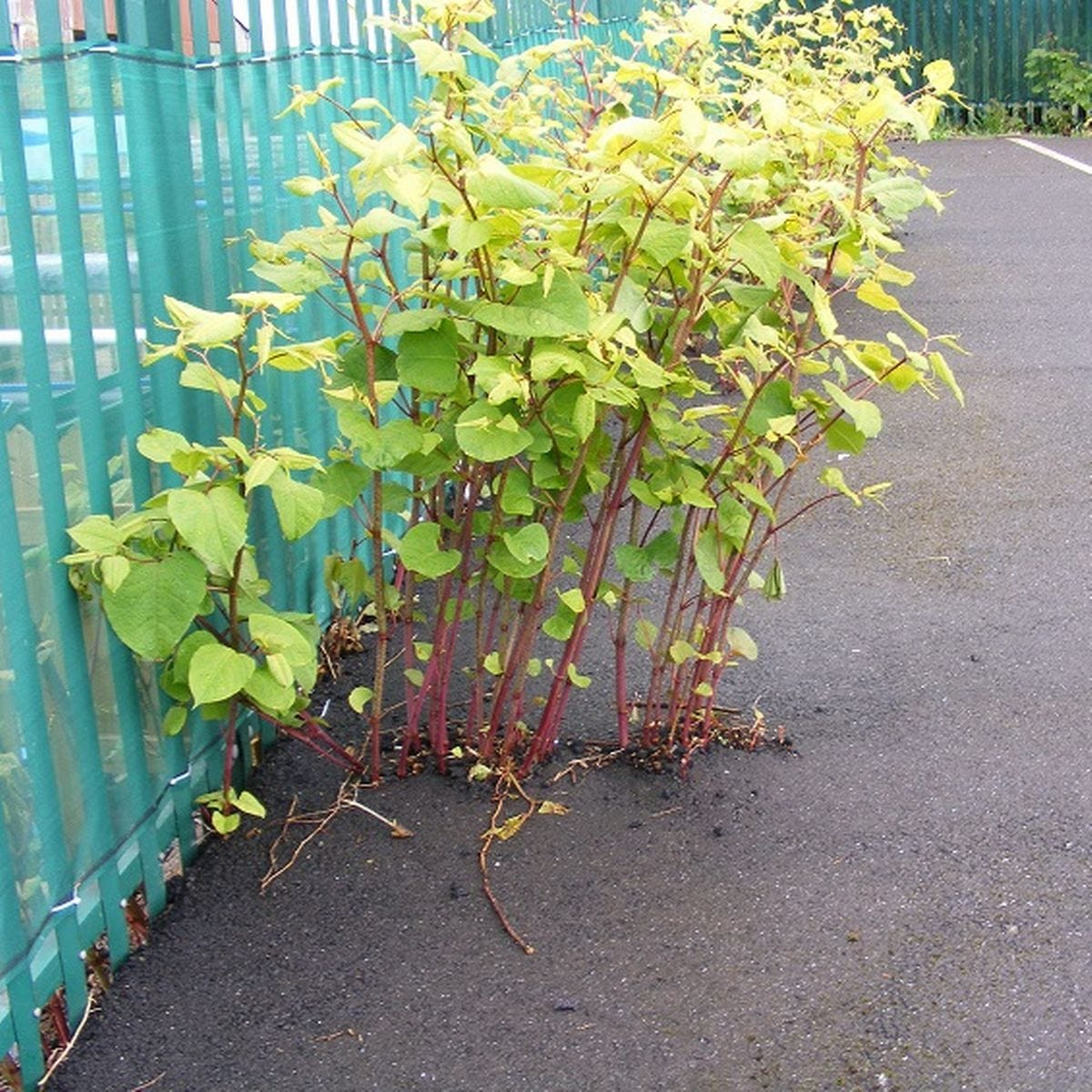Invasive plant maintenance
As part of our routine maintenance work, we regularly encounter non-native invasive species of plants in flower beds, hedges, and basins. Our knowledge and experience in dealing with this helps us keep sites in shape and clients satisfied. Both plants and aesthetics are impacted by weeds, so we are sure to keep on top of both removal and treatment on our site visits.
Non-native invasive species are plants that ‘occur outside their natural range due to direct or indirect introduction by humans.’ (RHS) Dangers include non-biotic impacts such as changing the pH of soil and reducing water flow, sometimes resulting in flooding. Other risks to habitat include a threat to native species who cannot outgrow these plants. Once a plant has invaded an area, it can costly to manage and restore the area to its original state.
Japanese Knotweed
One of the most highly invasive and damaging plants found in the UK is Japanese Knotweed. As pictured below, knotweed can lead to degradation of the area it invades. The plant can grow up to 8 feet in height, develop a thick red and white coloured stem, and spread a complex root system into the soil. Once this plant takes hold, it rapidly reproduces and can spread around your site or garden in a matter of weeks
Japanese Knotweed growing through concrete
In the worst cases, this leads to whole areas of flowerbed or grass needing to be dug out and relayed to eradicate the threat of knotweed returning. The fibrous roots can also cause structural damage, land you in legal trouble, and even devalue your property by up to 20%.
Giant Hogweed
Hogweed is a species that also poses a danger to humans due to its sap. Contact with this can cause blistering of the skin and therefore PPE must be used in removal. Originally introduced to the UK due to its use in decorative gardens, owing to the prominent white flower. However, it can produce 50,000 seeds every year. On top of this, seeds can remain dormant in soil for up to two years, which makes complete eradication of this weed difficult in the UK
Giant Hogweed
Despite its similarity to Cow Parsley, you can identify Hogweed by its wide flower heads, up to one and a half metre long leaves, and spotted leaf stalks. If you find this growing on your property, it is advisable to arrange immediate removal. You are also entitled to claim against any landlord who allows the plant to infringe on your property from their own. As with Japanese Knotweed, it is illegal to plant this in the UK and carries heavy penalties.
Hedge Bindweed
Identifiable by its winding stems and white trumpet flowers, hedge bindweed can damage expensive planted hedges and in turn, biodiversity. This plant grows around the stems of surrounding hedges and bushes, curtailing the growth of plants already present.
Bindweed in flower
Regular checks on hedges can prevent full infestations. As with all of the above weeds, we recommend removing this weed from the root to prevent regrowth.
Horsetail
Horsetail generally grows in the spring and early summer months. They appear in clumps that grow from creeping rhizomes. These can lay dormant as deep as two metres underground.
Horsetail
Horsetail grows well in wet conditions, and mossy grass can foster this. If you do have patches of heavy mossed grass areas, Enviro can also offer a moss removal service which will discourage horsetail growth, as well as benefit the health of your grass.
Himalayan Balsam
This plant produces brightly coloured flowers, and is often confused with busy Lizzie, however the rate of growth and ease in which is can spread its seed poses a risk to biodiversity.
Balsam with exploding pods seen below flower
Explosive pods growing around the flower can spread up to 1000 seeds across a six metres radius when punctured. The attractive appearance often leads to people exchanging seeds of the plant for flowerbeds and planters, however it grows quickly and smothers surrounding plants.
How to deal with non-native invasive species
There are many ways to deal with these weeds in a safe and controlled manner. At Enviro, we practice varied removal techniques. Many of our staff have licenses to lay down weed spray, of which some of the above can be treated with. Otherwise, we securely dispose of the weed through burying, off-site disposal, chemical spray, and burning after removal. It is important if you do decide to remove these yourself, that you properly dispose of the plants. Incorrect disposal could lead to further spread which could be detrimental to the local environment.
We are committed to controlling the spread of the above plants, as well as other weeds and invasive species we find on site. Our staff are fully trained in identifying and safely removing these weeds from your site. If you are a property manager looking for clearance of invasive species from your site, or a current client who has recently noticed new growth, please give us a call on 0800 878 9099 or email info@envirolandscapegroup.co.uk.





